26th August, 2025
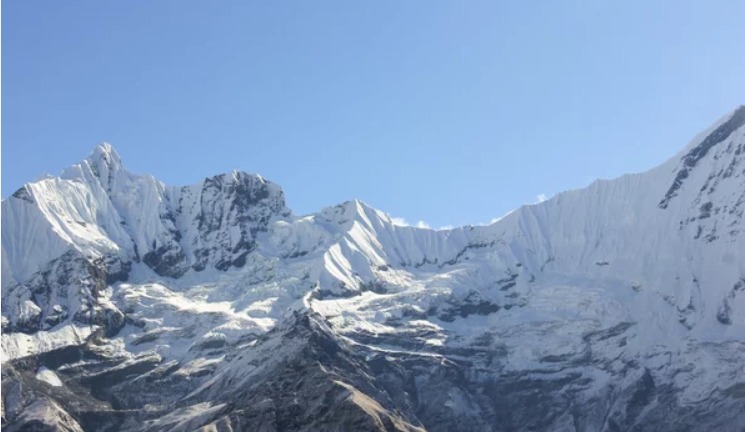
Aug 29, 2023
Annapurna Base Camp Trek in September
- Why Choose September for Trekking?
- Overview of Annapurna Sanctuary and Base Camp
- Preparation and Planning for the Trek
- Permits and Regulations
- Getting to Pokhara, the Gateway to the Trek
- Accommodation Options Along the Trail
- Food and Dining Experiences During the Trek
- Weather and Climate in September
- Flora and Fauna Encountered Along the Trail
- Safety Tips and Considerations
- Physical Fitness and Training Advice
- Cultural Insights and Local Customs
- Photography Tips for Capturing the Trek
- Recommended Gear and Packing List
- Challenges and Highlights of the Trek
- Alternative Routes and Side Trips
- Conclusion
- Annapurna Base Camp Trekking packages
Trekking to Annapurna Base Camp (ABC) in September offers a unique experience with its lush landscapes and clear skies, making it a popular choice among adventurers. Situated in the heart of the Annapurna Sanctuary, this trek showcases breathtaking views of towering peaks, diverse flora, and rich cultural encounters.
September marks the end of the monsoon season in Nepal, ensuring crisp, clear days ideal for trekking. The trail starts from Pokhara, a picturesque lakeside town, and gradually ascends through terraced hillsides adorned with vibrant wildflowers and traditional Gurung villages. The weather during this time is pleasantly cool, with occasional showers adding to the lushness of the surroundings.
As trekkers ascend towards the base camp, the landscape transitions from lush greenery to alpine forests and eventually to the rugged, rocky terrain characteristic of higher altitudes. Highlights along the way include natural hot springs at Jhinu Danda, where trekkers can relax and rejuvenate amidst stunning mountain vistas.
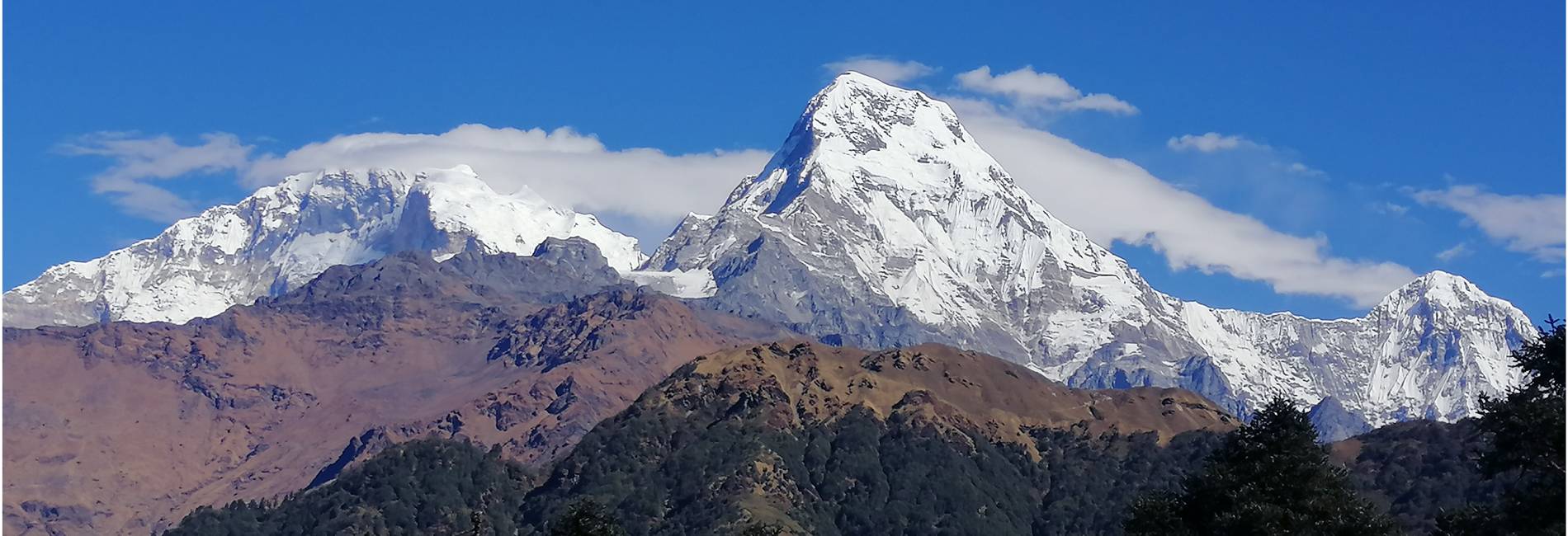
SHORT ANNAPURNA TREK
The Ghorepani Poon Hill Trek, also known as the Annapurna trek or Annapurna C trek, is a captivating journey through the Annapurna region of Nepal, renowned for its natural beauty and cultural richnes...
Reaching Annapurna Base Camp itself is a culmination of the journey, offering panoramic views of Annapurna I, Annapurna South, Machapuchare (Fishtail), and other peaks that form a natural amphitheater around the sanctuary. The sense of achievement upon reaching the base camp is unparalleled, with trekkers often celebrating amidst the camaraderie of fellow adventurers and the warmth of Nepalese hospitality.
September also coincides with local festivals such as Dashain, adding cultural depth to the trekking experience as villages come alive with traditional music, dance, and festivities. Overall, trekking to Annapurna Base Camp in September promises a blend of natural beauty, cultural immersion, and unforgettable memories amidst some of the world's most stunning mountain scenery.
Why Choose September for Trekking?
September is an optimal month for trekking to Annapurna Base Camp due to several key factors. Firstly, it marks the end of the monsoon season in Nepal, ensuring clearer skies and reduced rainfall compared to previous months. This translates to better visibility of the stunning Himalayan vistas and a more enjoyable trekking experience overall. The weather in September is typically mild and pleasant, making it comfortable for long days of trekking without the intense heat of the summer months or the cold of winter.
Moreover, September falls just before the peak tourist season in Nepal, which means the trails are generally less crowded. Trekkers can enjoy a quieter and more serene journey through the beautiful landscapes of the Annapurna region, with fewer trekkers on the trails and more opportunities to connect with local culture.
For those interested in flora and fauna, September is a great time as the vegetation is lush and vibrant after the monsoon rains, showcasing a variety of wildflowers and greenery along the way. Overall, September offers a perfect balance of favorable weather conditions, fewer crowds, and natural beauty, making it an ideal choice for trekking to Annapurna Base Camp.

GHOREPANI POON HILL ABC TREK
This is a classic trek, visiting Ghorepani (2874m), Poon Hill (3210m) & Annapurna Base Camp (4130m) - all within the Annapurna Conservation Area.Annapurna is a Sanskrit name which literally means...
Overview of Annapurna Sanctuary and Base Camp
The Annapurna Sanctuary, also known as the Annapurna Base Camp (ABC), is a natural amphitheater surrounded by towering peaks of the Annapurna range in Nepal. Situated at an altitude of approximately 4,130 meters (13,550 feet), ABC is a trekker's paradise offering panoramic views of some of the highest mountains in the world.
The trek to Annapurna Base Camp typically begins from Nayapul, passing through diverse landscapes ranging from terraced rice paddies to dense rhododendron forests and eventually into the alpine region. Trekkers navigate through traditional Gurung villages, experiencing the warm hospitality and rich cultural heritage of the local communities along the way.
Once at ABC, trekkers are rewarded with breathtaking views of peaks such as Annapurna I (8,091 meters), Annapurna South (7,219 meters), Machapuchare (6,993 meters), and Hiunchuli (6,441 meters), among others. The base camp itself is surrounded by glaciers and snow-capped mountains, creating a serene and awe-inspiring atmosphere that captivates visitors.
The Annapurna Sanctuary is not only a destination for trekking enthusiasts but also a place of immense natural beauty and spiritual significance. It offers a profound experience of being amidst some of the world's highest mountains, surrounded by pristine wilderness and the tranquility of the Himalayas.

ANNAPURNA BASE CAMP TREK
The Annapurna Base Camp (ABC) Trek via Ghorepani Poon Hill Trek offers a truly unforgettable Himalayan adventure, combining stunning panoramic views with the rich cultural tapestry of the region. This...
Preparation and Planning for the Trek
Preparing for the Annapurna Base Camp trek requires careful planning to ensure a safe and enjoyable journey. Begin by researching the route, including the number of days needed, the best season to trek, and the required permits. It's crucial to pack appropriate clothing and gear for varying weather conditions, including layers for warmth, rain gear, sturdy hiking boots, and a good backpack.
Physical fitness is essential for trekking at higher altitudes, so consider starting a training regimen several weeks before your trip to build stamina and endurance. It's also advisable to acclimatize gradually during the trek to prevent altitude sickness.
Booking accommodations in advance, especially during peak seasons, is recommended. There are teahouses along the trail that offer basic lodging and meals, providing a glimpse into the local culture and hospitality.
Lastly, ensure you have travel insurance that covers trekking activities and familiarize yourself with emergency procedures and evacuation routes in case of unforeseen circumstances. By thoroughly preparing and planning for your trek to Annapurna Base Camp, you can maximize your enjoyment and safety while exploring this spectacular region of Nepal.
Permits and Regulations
Before embarking on the Annapurna Base Camp trek, it's essential to obtain the necessary permits and adhere to local regulations. The main permits required for the trek include the Annapurna Conservation Area Permit (ACAP) and the Trekkers' Information Management System (TIMS) card.
The ACAP is issued to regulate entry into the Annapurna Conservation Area, which covers a large part of the trekking route. This permit helps fund conservation efforts and ensures sustainable tourism practices in the region. The TIMS card, on the other hand, provides information about trekkers and helps monitor their safety along the trail.
Permit fees vary depending on your nationality and the season, so it's advisable to check the latest information from the Nepal Tourism Board or consult with a reputable trekking agency to facilitate the permit application process.
In addition to permits, trekkers are expected to abide by local regulations aimed at preserving the natural environment and respecting the cultural norms of the communities they encounter. This includes disposing of waste responsibly, respecting wildlife habitats, and showing consideration for local customs and traditions.
By obtaining the necessary permits and adhering to regulations, trekkers can contribute to sustainable tourism practices and ensure a positive experience for themselves and future visitors to the Annapurna region.
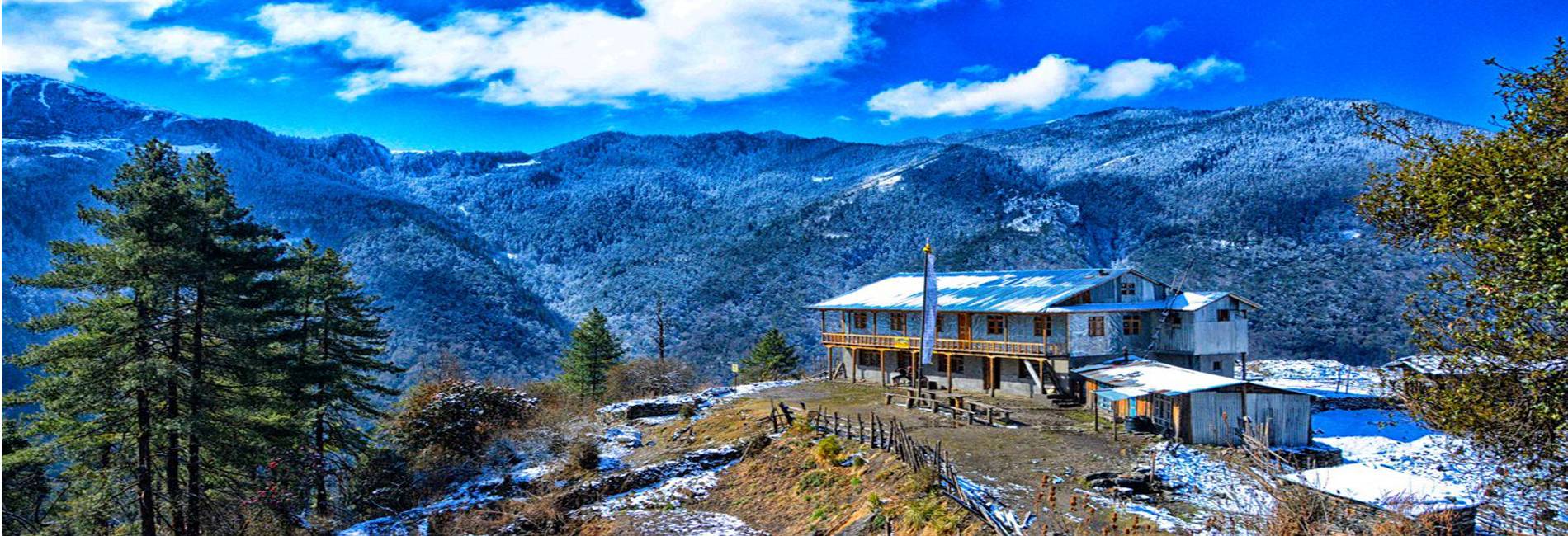
MOHARE DANDA TREK
DON’T LIKE CROWDS – TRY THIS NEW ECO-TOURISM TREK.The Mohare Danda (3313m) Trek is a new destination where trekkers stay in community-owned lodges or homestay. This gives you a more intimate experienc...
Getting to Pokhara, the Gateway to the Trek
Pokhara serves as the primary gateway for trekkers embarking on the Annapurna Base Camp trek, offering a serene starting point amidst the natural beauty of lakes and mountains. Situated approximately 200 kilometers west of Kathmandu, Pokhara is easily accessible by road or a short domestic flight from Nepal's capital.
Travelers arriving in Pokhara can explore its charming lakeside setting and prepare for their trek by purchasing any last-minute gear or supplies. The city boasts a range of accommodation options, from budget guesthouses to luxurious resorts, catering to different preferences and budgets.
From Pokhara, the trek to Annapurna Base Camp typically begins with a scenic drive to Nayapul, the starting point of the trekking route. Alternatively, trekkers can arrange for a private vehicle or join a shared transportation service to reach Nayapul, which is approximately a one-and-a-half-hour drive from Pokhara.
Pokhara also offers opportunities for sightseeing and relaxation before and after the trek, with attractions such as the World Peace Pagoda, Devi's Fall, and boat rides on Phewa Lake. Many trekkers choose to spend a day or two in Pokhara to acclimatize and enjoy the peaceful ambiance before embarking on their Himalayan adventure.
Overall, Pokhara's accessibility, natural beauty, and range of amenities make it an ideal starting point and base camp for trekkers heading to Annapurna Base Camp, setting the stage for an unforgettable journey into the heart of the Himalayas.
Accommodation Options Along the Trail
Accommodation options along the Annapurna Base Camp trek vary from basic teahouses to more comfortable lodges, providing trekkers with a range of choices depending on their preferences and budget. Teahouses are the most common form of accommodation, offering simple rooms with twin beds, blankets, and shared bathroom facilities. While basic, teahouses provide a cozy refuge after a day of trekking and often include communal dining areas where trekkers can socialize and share their experiences.
In recent years, some teahouses along popular trekking routes have upgraded their facilities to include attached bathrooms, hot showers (for a fee), and even Wi-Fi in some cases. Lodges and guesthouses in larger villages like Ghorepani and Chhomrong offer slightly more comfort with private rooms and amenities such as hot water showers and electricity, though standards can vary.
It's advisable to book accommodations in advance during peak seasons (like September) to secure a bed, especially in popular overnight stops like Ghorepani and Deurali. Prices for accommodations also vary depending on the location and the facilities offered, ranging from budget-friendly options to more mid-range choices.
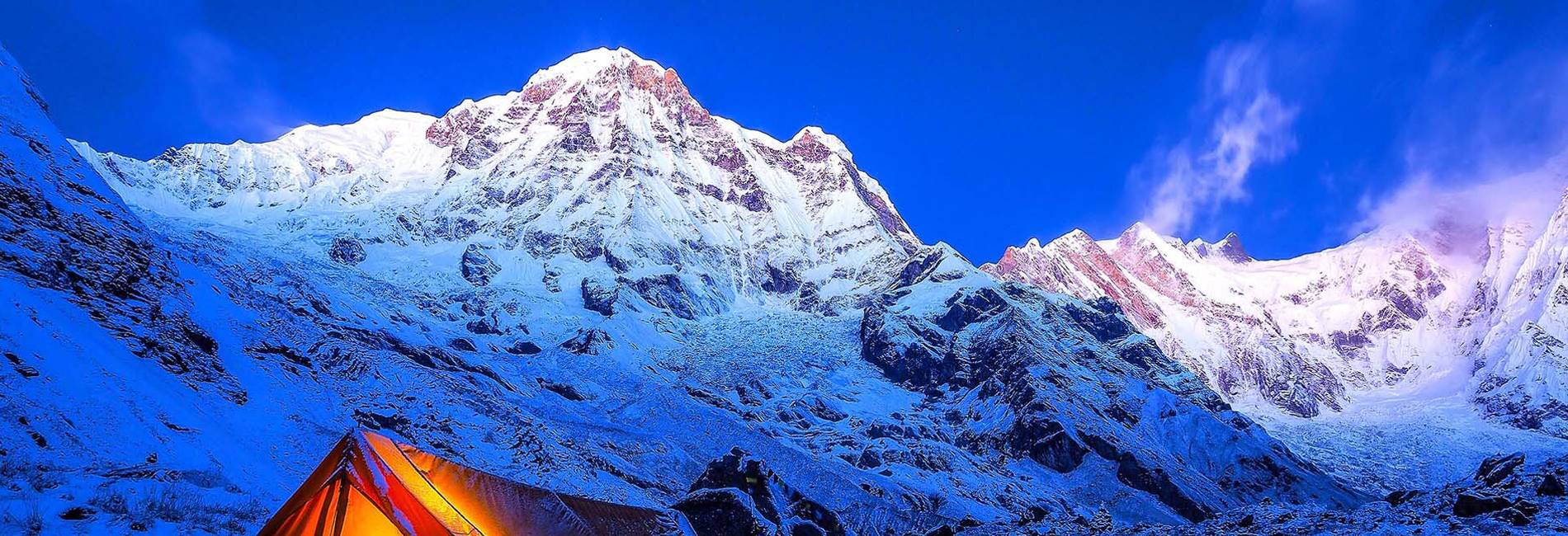
13 DAYS ANNAPURNA BASE CAMP TREK
Discover why “The Annapurna Base Camp (ABC) trek is world-famous. Here is a sample of soaring snow-capped peaks you will see along the trail: Mt. Dhaulagiri (8167m), Mt. Annapurna I (8091m) Mt. M...
Food and Dining Experiences During the Trek
The dining experience along the Annapurna Base Camp trek is diverse and surprisingly satisfying, given the remote nature of the trail. Teahouses and lodges typically offer a menu with a variety of local and international dishes, providing trekkers with hearty meals to fuel their journey.
Traditional Nepali fare such as dal bhat (rice and lentils), momos (dumplings), and thukpa (noodle soup) are popular choices among trekkers for their energy-boosting properties and flavorful taste. Western options like pasta, pizza, and sandwiches are also available in most teahouses, catering to different dietary preferences.
Food is usually prepared fresh upon order, and while choices may be more limited in higher altitudes, teahouses strive to provide nourishing meals using locally sourced ingredients. Trekkers are encouraged to drink plenty of fluids, including herbal teas and safe drinking water, to stay hydrated throughout the trek.
In terms of dining ambiance, teahouses often have communal dining areas where trekkers gather to share stories and experiences, creating a sense of camaraderie among fellow adventurers. Overall, the food and dining experiences along the Annapurna Base Camp trek are an integral part of the journey, offering sustenance and a taste of Nepali hospitality amidst breathtaking mountain scenery.
Weather and Climate in September
September is a favorable time to trek to Annapurna Base Camp due to its transitional weather following the monsoon season. During September, the weather in the Annapurna region is typically mild and stable, with clear skies and pleasant daytime temperatures ranging from 10°C to 20°C (50°F to 68°F) at lower altitudes.
While the mornings and evenings can be cool, especially at higher elevations, trekkers can expect dry and sunny days conducive to trekking. However, it's important to be prepared for occasional showers, particularly in the early part of the month as remnants of the monsoon may still affect the region.
As trekkers ascend towards higher altitudes, temperatures gradually decrease, with nighttime temperatures dropping below freezing at Annapurna Base Camp itself. Layered clothing is essential to stay comfortable throughout the day, with warm clothing needed for evenings and early mornings.
Overall, September offers stable weather conditions ideal for trekking, allowing trekkers to enjoy clear mountain views and vibrant landscapes without the intense cold of winter or the heavy rainfall of the monsoon season. It's advisable to check local weather forecasts and pack accordingly to ensure a comfortable and enjoyable trekking experience.
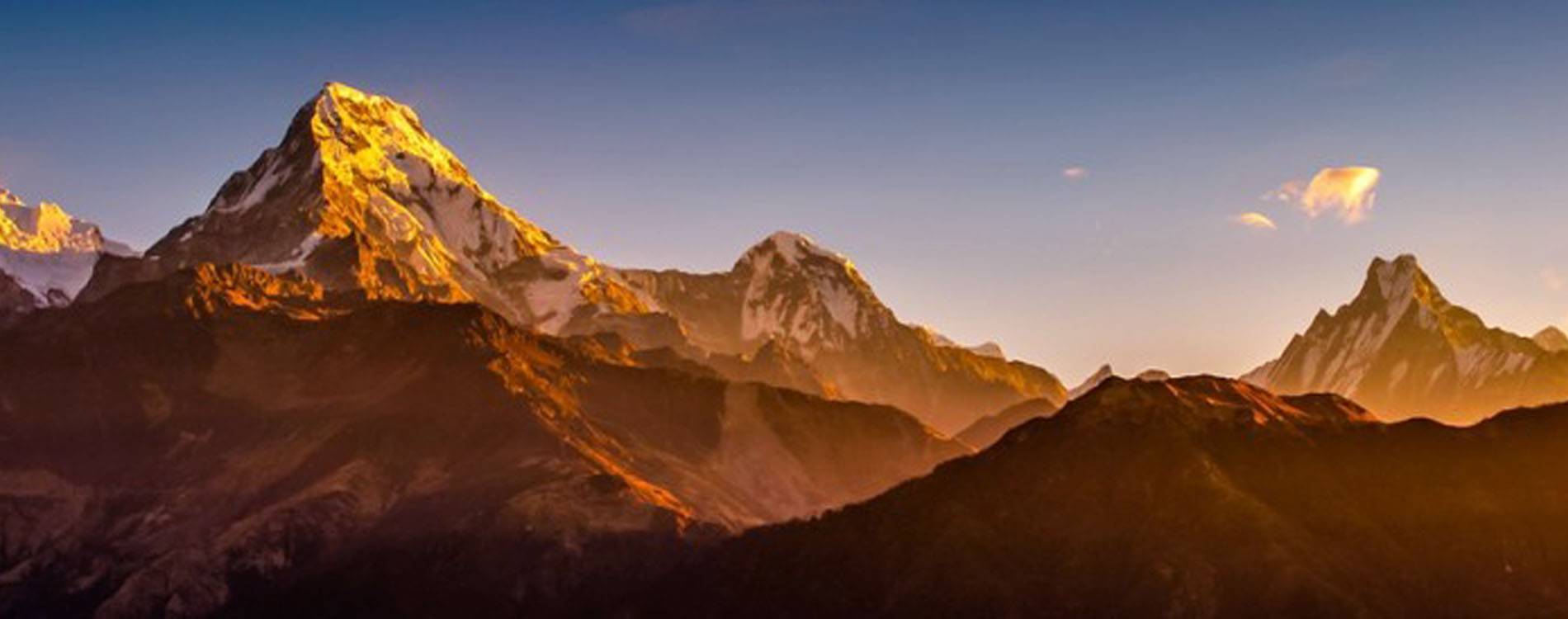
12 DAYS ANNAPURNA BASE CAMP TREK
DOUBLE THE ADVENTURE IN JUST 12 DAYS! The 12 Day Annapurna Base Camp Trek combines two well-known and popular treks into one - the Ghorepani Poon Hill Trek and the Annapurna Base Camp Trek (ABC)....
Flora and Fauna Encountered Along the Trail
The Annapurna Base Camp trek traverses through a diverse range of ecosystems, each hosting its own unique flora and fauna. At lower elevations, trekkers pass through lush forests dominated by rhododendron trees, Nepal's national flower, which bloom in vibrant colors during spring and early fall.
As the trek ascends, the landscape transitions to alpine meadows dotted with juniper and pine trees, creating a stark contrast to the lower altitude forests. Wildlife sightings along the trail may include Himalayan thars, a type of mountain goat, and various species of birds such as the colorful Danphe (Himalayan Monal), Nepal's national bird.
The Annapurna region is also home to a rich variety of plant species, some of which are endemic to the area. Trekkers may encounter medicinal herbs like yarsagumba (caterpillar fungus) and aromatic plants used in traditional Nepali medicine.
Conservation efforts within the Annapurna Conservation Area have helped preserve this biodiversity, making the trek not only a scenic journey but also an opportunity to appreciate Nepal's natural heritage. Trekkers are encouraged to respect wildlife habitats and refrain from disturbing the local flora and fauna to maintain the ecological balance of the region.
Safety Tips and Considerations
Trekking to Annapurna Base Camp is a rewarding adventure, but it's essential to prioritize safety to ensure a successful and enjoyable journey. Here are some key safety tips and considerations for trekkers:
Acclimatization: Ascend gradually to higher altitudes to acclimatize properly and minimize the risk of altitude sickness. Allow for rest days and stay hydrated.
Weather Awareness: Monitor weather forecasts and be prepared for sudden changes in weather conditions, especially in mountainous terrain.
Stay on Designated Trails: Stick to established trekking routes and avoid shortcuts to minimize the risk of getting lost or encountering hazardous terrain.
Pack Essentials: Carry essential items such as a first aid kit, sufficient water and snacks, navigation tools (map or GPS), and appropriate clothing for varying weather conditions.
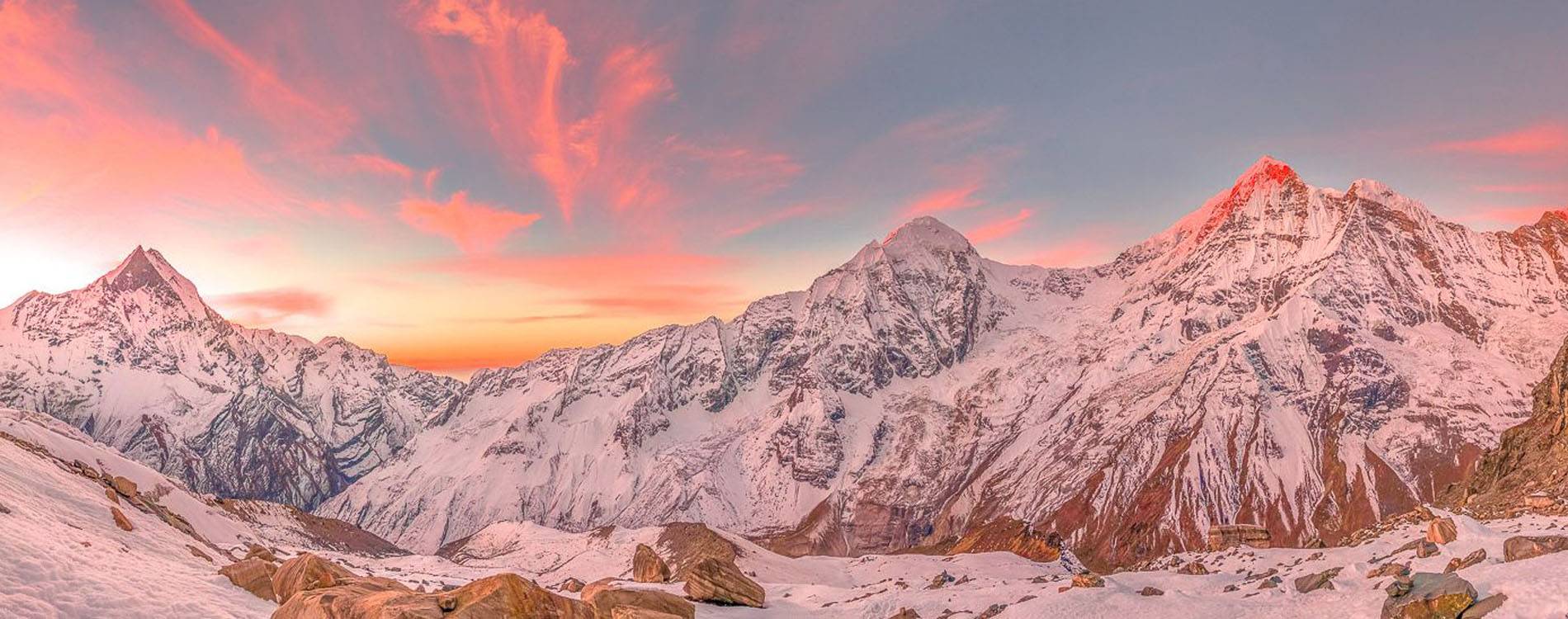
7 DAYS ANNAPURNA BASE CAMP TREK
Short on time – big on beauty!The 7 days Annapurna Base Camp Trek takes you to all the major attractions – but in less time than other treks to the Annapurna region. Take in the spectacular soaring sn...
Travel Insurance: Purchase travel insurance that covers trekking activities and includes emergency evacuation and medical expenses in case of accidents or illness.
Respect Local Culture: Familiarize yourself with local customs and traditions, and show respect towards local communities and their beliefs.
Stay Hydrated and Eat Well: Drink plenty of fluids to stay hydrated and maintain energy levels. Eat balanced meals to fuel your trekking activities.
Travel with a Guide or Group: Consider trekking with an experienced guide or as part of a group, especially if it's your first time trekking in the Himalayas.
By following these safety tips and exercising caution throughout your trek, you can minimize risks and fully enjoy the natural beauty and adventure of trekking to Annapurna Base Camp.
Physical Fitness and Training Advice
Trekking to Annapurna Base Camp requires a good level of physical fitness and stamina due to the varying terrain and high altitudes encountered along the trail. Here are some training tips and advice to help prepare for the trek:
Cardiovascular Exercise: Incorporate activities such as hiking, jogging, cycling, or swimming into your fitness routine to improve cardiovascular endurance.
Strength Training: Build strength in your legs, core, and upper body through exercises such as squats, lunges, planks, and weightlifting to support your body during long days of trekking and carrying a backpack.
Flexibility and Balance: Include stretching exercises and yoga to improve flexibility, balance, and agility, which are beneficial for navigating uneven terrain and reducing the risk of injuries.
Gradual Altitude Exposure: If possible, acclimatize gradually by trekking at higher altitudes before your Annapurna Base Camp trek. This helps your body adjust to reduced oxygen levels and reduces the risk of altitude sickness.
Hydration and Nutrition: Maintain a balanced diet rich in carbohydrates, proteins, and healthy fats to fuel your training and trekking activities. Stay hydrated by drinking plenty of water throughout the day.

13 DAYS ANNAPURNA BASE CAMP TREK
Discover why “The Annapurna Base Camp (ABC) trek is world-famous. Here is a sample of soaring snow-capped peaks you will see along the trail: Mt. Dhaulagiri (8167m), Mt. Annapurna I (8091m) Mt. M...
Practice Trekking with a Backpack: Train with a loaded backpack to simulate the weight you'll carry during the trek. Start with lighter loads and gradually increase the weight as you build strength and endurance.
Rest and Recovery: Allow for adequate rest days between training sessions to prevent overtraining and promote muscle recovery. Listen to your body and adjust your training intensity as needed.
Preparing physically for the Annapurna Base Camp trek not only enhances your trekking experience but also contributes to your overall enjoyment and success in completing the journey. By committing to a well-rounded training regimen and staying consistent with your fitness goals, you'll be better equipped to tackle the challenges and savor the breathtaking landscapes of the Himalayas.
Cultural Insights and Local Customs
Trekking to Annapurna Base Camp offers more than just natural beauty; it's an opportunity to immerse oneself in the rich cultural tapestry of Nepal. Along the trail, trekkers encounter traditional villages inhabited by Gurung and Magar communities, known for their warm hospitality and unique customs. It's customary to greet locals with "Namaste" and to ask for permission before taking photographs, respecting their privacy and cultural beliefs.
Visiting local monasteries and temples provides insight into Nepal's spiritual heritage, where Buddhist prayer flags flutter in the mountain breeze and prayer wheels spin with mantras. Observing religious rituals and festivals, such as Dashain and Tihar, adds depth to the trekking experience, offering glimpses into centuries-old traditions.
Learning about local farming practices, handicrafts, and cuisine enriches cultural understanding. Trying traditional dishes like dal bhat (rice and lentils) and participating in cultural dances and music nights organized by teahouses foster connections with the community. By embracing local customs respectfully, trekkers can forge meaningful connections and gain a deeper appreciation for the cultural richness of the Annapurna region.
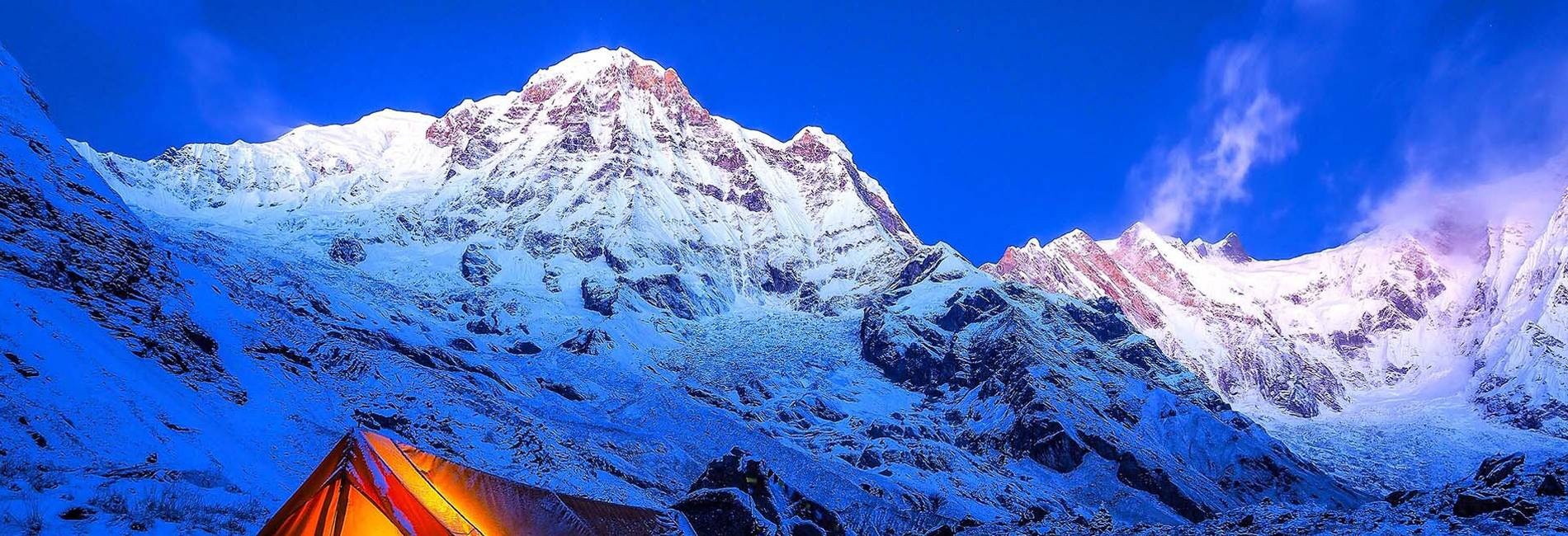
ANNAPURNA BASE CAMP TREK 8 DAYS
The 8 days Annapurna Base Camp Trek is the most popular and amazing trek in the Annapurna region which offers combines remarkable Himalaya vistas, traditional Gurung and Magar village life, and dense...
Photography Tips for Capturing the Trek
Capturing the breathtaking landscapes and unique moments along the Annapurna Base Camp trek requires thoughtful photography techniques. Here are some tips to enhance your photography experience:
Golden Hours: Make the most of the soft, warm light during sunrise and sunset to capture stunning mountain silhouettes and vibrant sky colors.
Use a Wide-angle Lens: A wide-angle lens is ideal for capturing expansive mountain vistas and sweeping landscapes.
Include Foreground Interest: Incorporate elements such as trekking trails, prayer flags, or local architecture in the foreground to add depth and context to your photos.
Capture People: Portraits of local villagers, fellow trekkers, and guides add a human element to your photographic story, reflecting the cultural diversity of the region.
Respect Privacy: Always ask for permission before photographing individuals, especially in villages and religious sites, to respect local customs and privacy.
Experiment with Perspectives: Explore different angles and perspectives to create dynamic compositions that highlight the grandeur of the Himalayan scenery.
Pack Essentials: Carry extra batteries, memory cards, and protective gear (e.g., waterproof covers) for your camera equipment, as weather conditions can be unpredictable.
Tell a Story: Capture moments that convey the essence of your trekking experience, from challenging ascents to serene moments of reflection amidst nature's beauty.
By combining technical skills with an appreciation for the natural and cultural wonders of the Annapurna region, you can create compelling photographs that preserve memories and inspire others to explore this remarkable trekking destination.
Recommended Gear and Packing List
Packing for the Annapurna Base Camp trek requires careful consideration of essential gear to ensure comfort, safety, and enjoyment throughout the journey. Here's a recommended packing list:
Clothing: Lightweight and breathable trekking shirts, moisture-wicking base layers, insulated jacket, waterproof and windproof outer shell, trekking pants, thermal underwear, gloves, beanie, and sturdy hiking boots with good ankle support.
Gear: Backpack (30-40 liters), sleeping bag suitable for cold temperatures (0°C to -10°C), trekking poles, headlamp or flashlight with spare batteries, sunglasses with UV protection, and a wide-brimmed hat or cap.
Personal Items: Sunscreen (SPF 30+), lip balm with SPF, personal toiletries, quick-dry towel, hand sanitizer, insect repellent, and a first aid kit with essentials like bandages, blister treatments, pain relievers, and any prescribed medications.
Electronics: Camera with extra batteries and memory cards, mobile phone with portable charger, and possibly a portable solar charger for longer treks.
Miscellaneous: Lightweight and quick-drying travel towel, trekking map or guidebook, reusable water bottle or hydration system, and snacks (energy bars, nuts, dried fruits) for trekking days.

ANNAPURNA BASE CAMP TREK 9 DAYS
The Annapurna Base Camp (ABC) (4130m) is also known as the "Annapurna Sanctuary Trek". This trek promises “in-your-face” unprecedented views of colossal Himalaya ranges, which include Hiunchuli, Macha...
Documents: Passport (or copy), travel insurance details, permits (ACAP and TIMS card), and emergency contact information.
Pack light but efficiently, considering the variable weather conditions and the need to carry essentials comfortably during long trekking days. Prioritize items that enhance safety, comfort, and enjoyment while minimizing unnecessary weight.
Challenges and Highlights of the Trek
Trekking to Annapurna Base Camp presents both challenges and highlights that contribute to its allure as a premier Himalayan adventure.
Challenges:
Altitude: Acclimatization to high altitudes is crucial to avoid altitude sickness, requiring gradual ascent and adequate rest.
Weather: Unpredictable weather conditions, including cold temperatures and occasional rain or snow, necessitate preparation with appropriate clothing and gear.
Physical Endurance: Long trekking days, steep ascents and descents, and varying trail conditions demand good physical fitness and stamina.
Crowds: During peak seasons like September, popular sections of the trail can be crowded, requiring early booking of accommodations and permits.
Highlights:
Panoramic Views: Spectacular views of Annapurna I, Machapuchare, and other snow-capped peaks from Annapurna Base Camp.
Cultural Immersion: Interactions with local Gurung and Magar communities, experiencing their hospitality, traditions, and way of life.
Natural Beauty: Diverse landscapes ranging from lush forests and terraced fields to alpine meadows and glacial moraines.
Wildlife: Possible sightings of Himalayan wildlife such as thar, langur monkeys, and a variety of bird species along the trekking route.
Personal Achievement: Reaching Annapurna Base Camp, standing at the foot of towering peaks, and celebrating the accomplishment with fellow trekkers.
Navigating these challenges and embracing the highlights make the Annapurna Base Camp trek a transformative journey filled with memorable experiences and a deeper connection to Nepal's natural and cultural heritage.
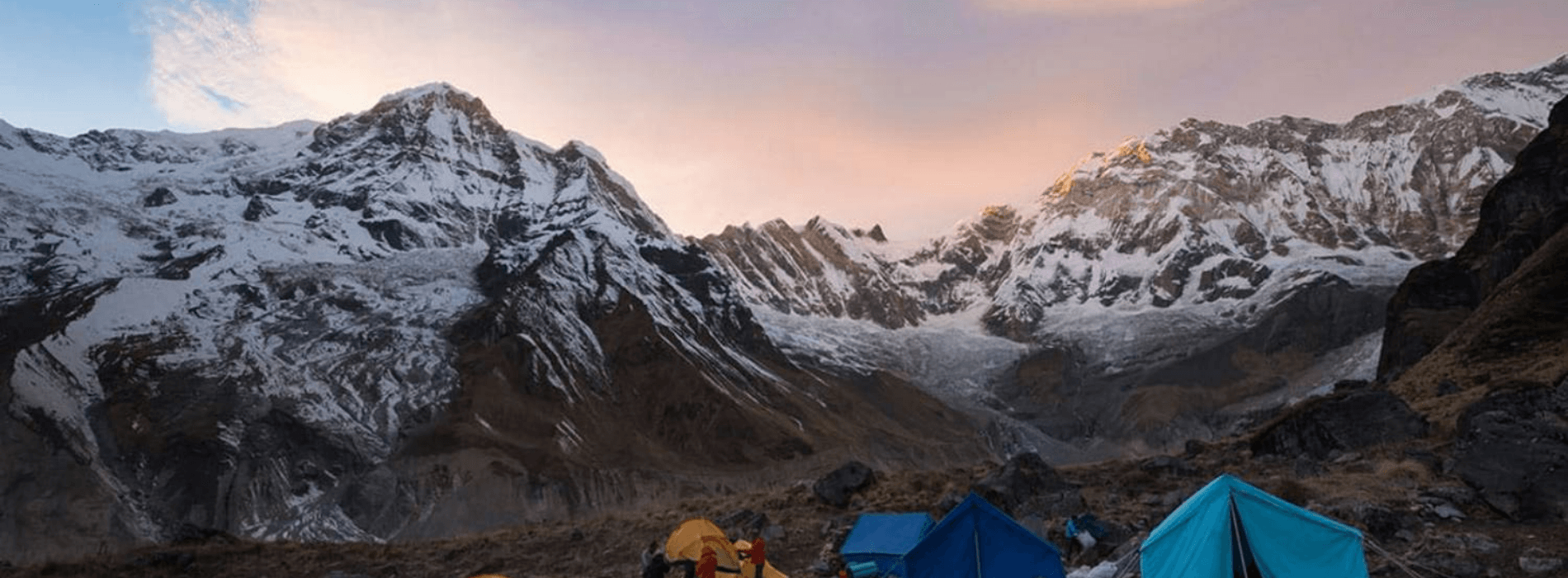
ANNAPURNA BASE CAMP TREK 6 DAYS
The 6 days Annapurna Base Camp Trek is an ideal adventure for those people who have a tight schedule but still want to experience the amazing landscape and the fascinating lifestyles of the Gurung cul...
Alternative Routes and Side Trips
While the main Annapurna Base Camp trek is a well-trodden path, there are alternative routes and side trips that offer different perspectives and experiences in the Annapurna region:
Annapurna Circuit: A longer trek circumnavigating the Annapurna Massif, combining high mountain passes, diverse landscapes, and cultural encounters.
Mardi Himal Trek: A relatively new trekking route offering stunning views of Machapuchare and the Annapurna range, with quieter trails and fewer trekkers.
Ghorepani Poon Hill Trek: A shorter trek to Ghorepani and Poon Hill, known for its panoramic sunrise views of the Annapurna and Dhaulagiri ranges.
Tilicho Lake Trek: A challenging trek to one of the highest lakes in the world, nestled in the Annapurna range, known for its turquoise waters and dramatic scenery.
Jomsom and Mustang Region: Trekking in the rain shadow area of the Himalayas, renowned for Tibetan Buddhist culture, desert-like landscapes, and ancient monasteries.
Each alternative route offers unique attractions and challenges, catering to different trekking preferences and time constraints. Whether you opt for the classic Annapurna Base Camp trek or explore alternative routes, Nepal's Annapurna region promises unforgettable experiences amidst some of the world's most stunning mountain scenery.
Conclusion
Trekking to Annapurna Base Camp in September is a journey of breathtaking beauty, cultural immersion, and personal achievement. The trek offers a perfect blend of natural splendor, from lush forests and terraced hillsides to the towering peaks of the Annapurna range. September, with its mild weather and clear skies following the monsoon season, provides optimal conditions for trekking, ensuring stunning mountain views and comfortable hiking temperatures.
Beyond the natural beauty, the trek provides opportunities for cultural insights, connecting with local communities like the Gurung and Magar people who inhabit the villages along the trail. Their warm hospitality, traditional practices, and spiritual customs enrich the trekking experience, offering a deeper understanding of Nepal's diverse cultural tapestry.
While trekking to Annapurna Base Camp presents challenges such as altitude and variable weather conditions, these are outweighed by the highlights of reaching the base camp itself, standing in awe of Annapurna I and other majestic peaks, and celebrating with fellow trekkers amidst the tranquility of the Himalayas.
Whether you're drawn to the trek for its natural beauty, cultural encounters, or personal challenge, the Annapurna Base Camp trek in September promises to be a transformative adventure, leaving you with lifelong memories and a profound appreciation for Nepal's mountainous landscapes.
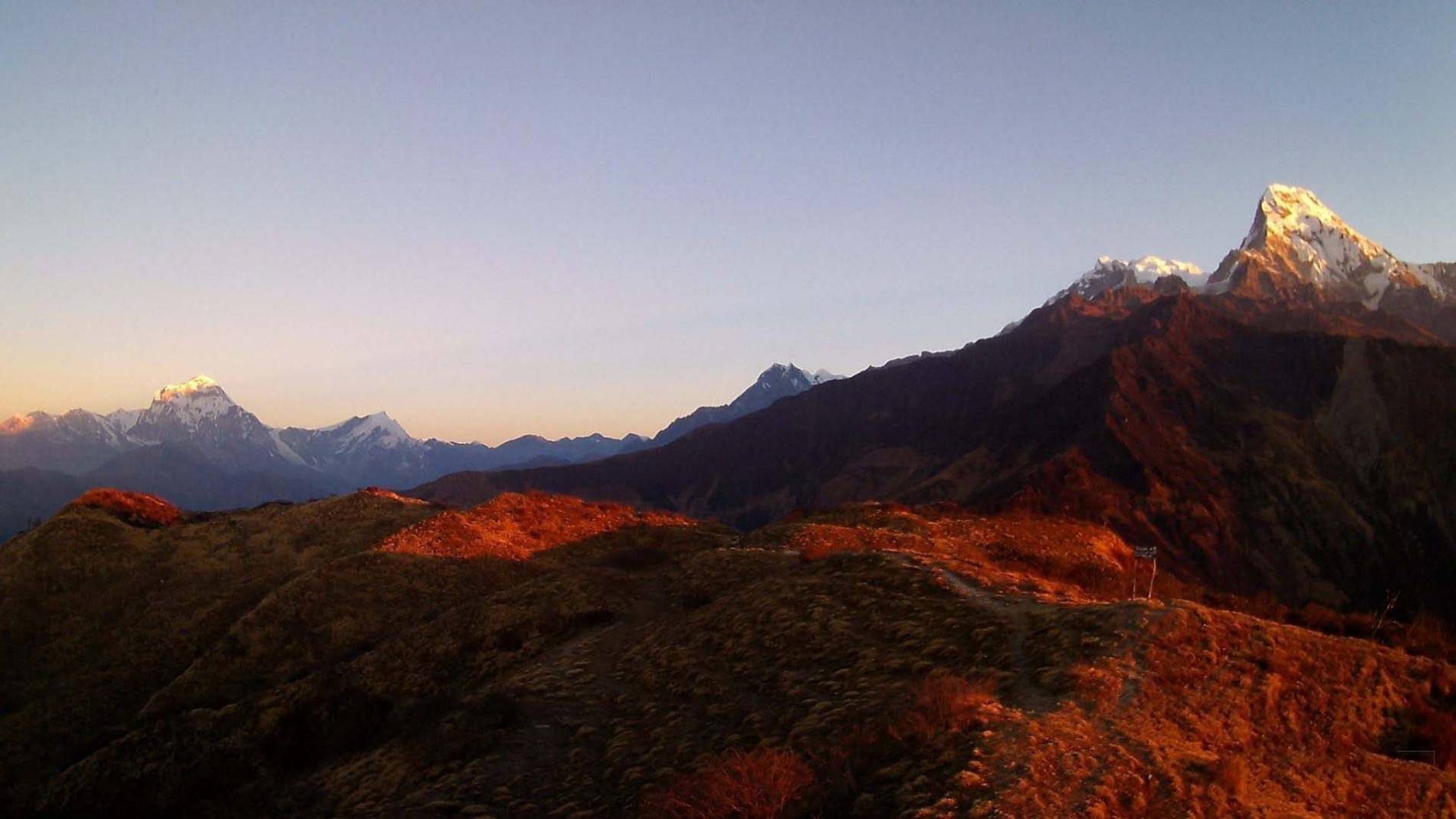
KHOPRA DANDA TREK
SOLITUDE & BEAUTY WITH FEWER TOURISTS & A SMORGASBORD OF MOUNTAINS TO FEAST YOUR EYES ON!The newly opened Khopra Danda Trek in a remote part of the Annapurna region offers unspoiled natural be...
Annapurna Base Camp Trekking packages
14 Days Annapurna Base Camp Trek
13 Days Annapurna Base Camp Trek
12 Days Annapurna Base Camp Trek
9 Days Annapurna Base Camp Trek
Any Questions? Let Us Know.
Recent Posts
17th June, 2025


















